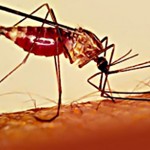
Decades in the making, the dengue vaccine’s arrival is now in sight, but demand from the 2.5 billion people at risk of contracting this mosquito-borne disease will be much greater than the initial supply, health experts warn.
“The vaccine is just around the corner, but the corner is four years from now,” Luiz Jacintho da Silva, director of the South Korea-based International Vaccine Institute (IVI), an organization strategizing vaccine distribution, told IRIN. “It is promising, but not an answer to all of our prayers.”
While dengue vaccine development has been widespread among research institutions and pharmaceutical companies, Sanofi Pasteur, the largest vaccine developer in the world, is years ahead of the rest. If all goes well in the ongoing clinical trials, experts say immunizing the public may begin as soon as 2015.
But the estimated 300 to 400 million people who will want the vaccine is too much for just one manufacturer.
“Unless someone pops up with something fantastic, they will be the soul producer for a few years. Capacity will be limited and we will not be able to reach everyone,” Da Silva said.
Forty years have gone into developing a dengue vaccine – three to four times longer than it took to create similar vaccines for other mosquito-borne illnesses such as Japanese encephalitis and yellow fever, said Steve Whitehead, a researcher with the Laboratory of Infectious Diseases, part of the US National Institutes of Health.
To be effective, four different dengue diseases had to be rolled into one vaccine, which made the process that much more complicated.
“It is clearly a difficult journey,” said Joachim Hombach, acting head of the initiative of vaccine research for the World Health Organization (WHO) in Geneva.
Urban risk
Dengue is the most common mosquito-borne illness and is endemic in 100 countries mostly in Africa, the Americas and Asia, but 70 percent of those at risk live in the Asia Pacific region.
Rapid urbanization, characterized by densely populated areas and widespread mosquito breeding grounds, means the disease can spread very quickly, experts say.
But it is thanks to this emerging market that so many developers are now on board, said Richard Mahoney, coordinator of policy and access, based in Arizona for the Dengue Vaccine Initiative, part of IVI.
“We’ve gone from a situation where we didn’t have any vaccines in clinical development to now having vaccines in Phase 1, Phase 2 and Phase 3 trials,” Mahoney said. Vaccines enter clinical trials to test the safety and efficacy in humans on an increasingly larger scale. “Countries are concerned about it; it’s an urban disease, and you have the growth of wealthy people in cities. Companies respond to these market forces.”
But access for those most at risk – the urban poor – is what Mahoney and his colleagues worry about most. With the arrival of several new vaccines, governments must prioritize needs and affordability.
Attuned to the challenge, Sanofi Pasteur is joining efforts with international organizations to move dengue vaccination higher on the global health agenda, said Benoit Rungeard, a spokesperson for the company.
“The goal is to accelerate the adoption and introduction of dengue vaccination and on making it accessible to those at highest risk of dengue,” he said.
Ultimately, the vaccine needs to make financial sense, health experts say.
Suthee Yoksan, director of vaccine development at the Thailand-based Mahidol, said a vaccine would be cost-effective for countries such as his, Thailand, where thousands of dollars go to dengue diagnostic kits every year.
Others, however, say the road for dengue is typical: an affordable vaccine depends on international interest and support, as many of the countries most at risk are low- to middle-income.
And until the vaccine arrives, governments are forced to rely on public awareness campaigns to control mosquito populations. However, limiting the insects’ breeding grounds – stagnant pools of water as shallow as a few centimetres – is largely ineffective, scientists say.
“We are going to have a tough situation in the next few years,” IVI’s Da Silva said.
Source: IRIN Global

















